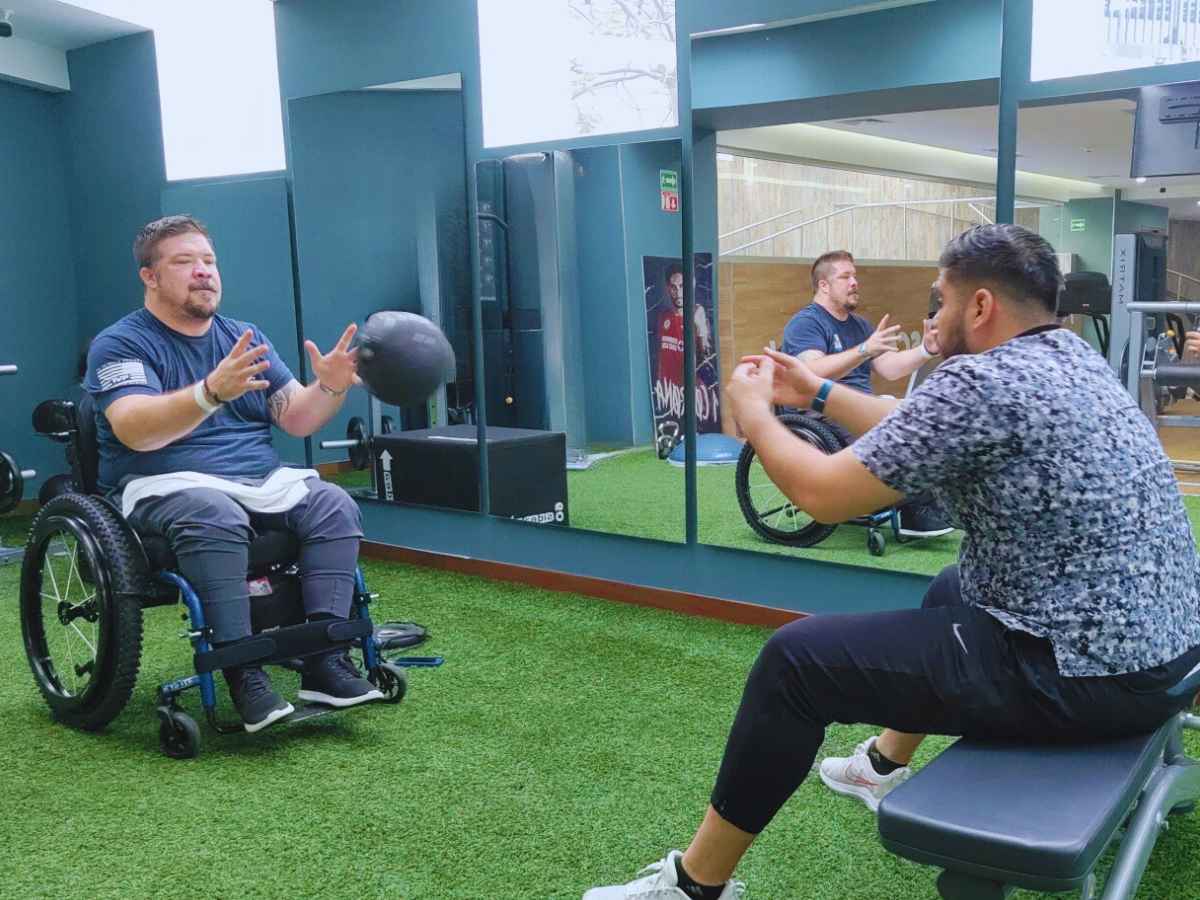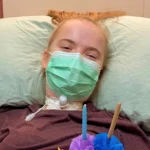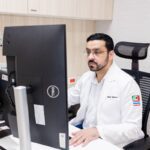Motorcycle accident spinal injuries are common in the US. In fact, automobile and motorcycle accidents are some of the leading causes of spinal cord injury in the US, according to the Mayo Clinic. Paul Attaway was unfortunate enough to suffer a T8-level complete spinal cord injury as a result of his motorcycle accident, leaving him with a diagnosis of paraplegia. He came to Mexico in January 2024 to begin his epidural stimulation treatment protocol. In a webinar interview, he discussed his experiences of the treatment with Dr. Beatriz and Dr. Paulina from our expert neurosurgical team in Guadalajara.
Please could you tell us about yourself prior to the accident?
Before the injury, I would classify myself as a pretty active person, and I used to like doing a lot of outdoor activities: hiking, mountain biking. Aside from that, I also liked doing a lot of projects, a lot of home renovation projects. Probably the thing I worked on the most, right before my injury, was I have a 1966 Chevrolet C10 and I’ve been working on restoring that and a pickup truck for a couple of years. Right now it’s sitting in the garage and I hope to get back to it one day.
And please tell us a little about your injury
Sure, so I first got injured, May 15 2021. I was on a motorcycle and I don’t remember most of the incident, because I lost a lot of my memory. But I did get ran into by another vehicle, whilst on my motorcycle. I woke up about three days later, that’s really kind of the first time I remember coming, and when I woke, they told me that I was going to be a paraplegic, and I wouldn’t be able to walk for the rest of my life. At the same time, I received some severe injuries to my arms, as well, some orthopedic injuries. So they had to do a lot of rehab, and try to get my arms back. But most notably since the accident, I haven’t been able to walk and I was diagnosed as a T8 paraplegic complete.
What treatment are you receiving with Verita Neuro?
I had epidural stimulation implantation surgery and received stem cell treatments too. So the treatment that I went with is five weeks, which includes the surgery, so I think it was only day three that I was starting therapy, and I leave this coming Sunday, so it was five weeks all in. I think that might vary by condition depending on the person, but that’s how long it was for me.
What were your initial impressions of Verita Neuro?
Sure. I mean, even before I arrived, I had preconceived notions about Mexico, you know, I was expecting it to be kind of this old historic town. Before I got here, I did a little bit of research, and even when I got here, I was surprised at how, you know, modern everything is. They’re doing a lot of new construction and new builds and have a lot of modern buildings. When I got here at the hospital, I noticed it was a new building with a lot of amenities and just a really nice facility. Once I had the surgery and moved from the main hospital into the clinic, I noticed that the clinic was very modern and very nice – up-to-date facilities, the latest technology.
And what did you think about the team?
Yeah, I would say that’s probably been the most impressive part about Verita Neuro, just how professional and thorough and competent the therapists have been throughout the process. Even meeting the doctors, right off the bat, they were all very knowledgeable, they knew what was going on. They explained the surgery very thoroughly to me – what I should expect, how long I’m going to be in the hospital before I go to the clinic etc. So everybody’s just been really amazing, really helpful. Some of, probably, the more competent professionals I’ve worked with in my two and a half years or so of rehabilitation.
What treatment had you received prior to coming to Mexico?
When I very first got injured, I spent the first month roughly, maybe a little longer, maybe six weeks, at the same hospital, which was Baylor University, Dallas, and they had a whole rehab program there. So right off the bat, I was in the ICU for I think, a couple of weeks. Then, after moving from the ICU, within the first couple of days, they moved me into rehabilitation in that facility. Then after that, I spent another, I think, six or seven months at the VA hospital in Dallas, where I continued therapy, both on my spine and my arms. I think a big part of the therapy that I’ve had to date, which is different from Verita Neuro, was they’re teaching you how to be paralyzed. It’s looking to teach you how to do a chair transfer and how to do all your bladder and bowel care and how to feed yourself and just a lot of the basic necessities you’ll need to survive in a wheelchair.
How was your first day in Mexico?
So the whole process of getting to Verita Neuro was really simplified. I landed in the airport, and I don’t think I really had to do anything after that. I got helped all the way from the plane to baggage claim into transportation that was arranged by Verita Neuro straight to the hospital. I met Sabina right at the front door, she helped me fill out the initial intake paperwork, helped me up to my room, introduced me to a lot of the people, a lot of the doctors and went through the whole process, I think it was just very simple. Later that day, we did a couple of tests, I think we did a CT scan and a couple things just to kind of verify nothing had changed since the initial imaging I had sent over. Then after that I got in bed and then early the next morning, we went right into surgery. It was very simple, very short too, I think it was only a couple of hours, by the time I went to sleep to the time I woke up. I spent the first couple of days on bed rest and then after that we immediately started treatment and got after it.
Do you think Mexico is safe? What were your perceptions of Mexico prior to coming?
So I’ll address that in several parts. The first question of Mexico being dangerous, for anybody back home in the US – the people that say Mexico is dangerous are the same people that give you all your other news. Take that as you will. Beyond that, I would say, everything is handled by Verita Neuro. Like I mentioned, right from the airport, they were there to pick me up, took me directly to the hospital. The hospital was a very new modern facility with security and everything that goes with that. I’ve had no issues and I’ve actually gone out and about and kind of visible to see a little bit, actually on my wheelchair, and I’ve met nothing but wonderful people who are very accommodating and very nice. I think that for those that are worried about security, I don’t think you have much to worry about. I think Guadalajara is a very safe city, first of all. The hospitals got extra security and extra people looking out for the patients in the hospital. Then beyond that, I haven’t had anything but positive experiences the whole time I’ve been here.
How has your rehab been since surgery? And have you seen any improvements so far?
For me, everybody’s different, but I’d say the first three weeks, I didn’t see any real noticeable difference. But since then I think I really started to see some real progress. I’m not gonna say I’m up, walking around yet, but I would say that, I’m starting to notice a little better bladder control. I’ve noticed the volitional movement with the simulators on has vastly improved from when I first started. I’ve had the ability to even lock my knees and stand for small periods of time. It’s still a long journey, there’s still a lot of work to do but just in the short time I’ve been here, I’ve started seeing some modest improvements and I think that those are going to continue as I continue my therapy.
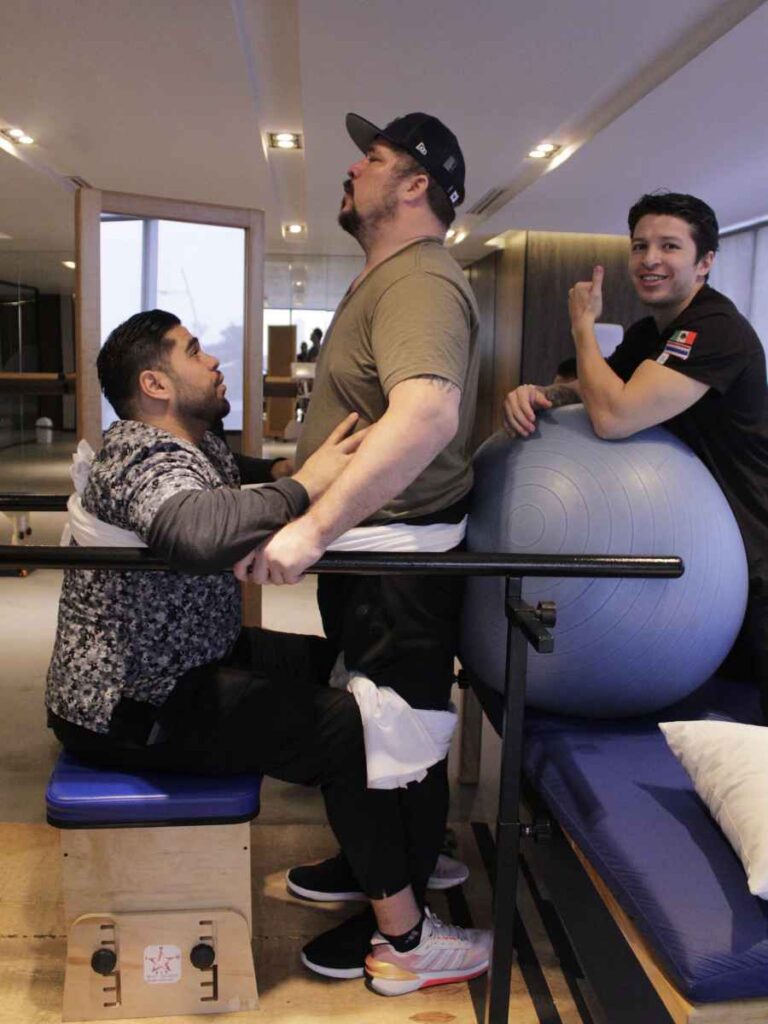
Do you think this will contribute to your wellbeing, independence and your future goals?
Yeah, absolutely. I think that it just gave me hope that there might be a future because before they were saying “You’re complete, you’re never gonna walk again”. That’s, that’s kind of the end of it, right? I did the research before I came and I’ve read a lot about epidural stimulation and it is a long term thing and you’re going to have to continue to work on it. But I think just giving me and anybody that undergoes a surgery that extra hope that you might be able to get better, or see just any sort of functional improvement because even little things make a major difference. That’s the one thing I can say from the two and a half years I’ve been injured, just modest improvement, like, “Oh, I can turn my arm another 10 degrees!” has major improvements in your life and your lifestyle. So I’m really looking forward to the future and as I continue doing rehab, seeing what is to come and where I can go with this and thanks to this treatment.
How does your treatment at Verita Neuro compare to your previous treatments?
I kind of touched on it a bit earlier, but all the therapy I’ve ever had to date has been teaching me how to be paralyzed, right? None of the work I’ve ever done just said, “We’re going to try to help you to walk again” or “We’re going to try to help you to stand or make any sort of improvements” it’s always been, “Well, here’s how you’re gonna have to live from now on, you’ll get used to it and this is just how it’s going to be.” I think it is really refreshing to go somewhere where the therapists are really working hard to say “We want to see you stand, we want to see these major functional improvements in your life and things that are really going to make a difference.” I think just on that basis alone, I would say Verita Neuro is best in class, as far as you know, this type of injury goes and trying to see people really improve, as opposed to “We’re just trying to teach you how to live in a wheelchair.”
What are your goals for the future and for the 35 days of treatment?
For me, it’s the same goals – when I decided to do the surgery, I thought a lot about whether or not I should even do the procedure. It’s a substantial investment, in your health and into your future. To me, it ultimately came down to if I had the means to do it, and I didn’t do it, I would have never forgiven myself. So I think the goals that I set for myself earlier is I want to try to get as much of my own life back as I can and a big part of that was travelling and being outdoors. It’s possible in a wheelchair, but it certainly has its challenges, so if I could get to a point where I could just get some continued improvement in bladder control. Probably the biggest thing is standing even for a very brief period of time to help with the transfers more than anything, that would be a major improvement. A lot of the issues that anybody who has been in a wheelchair for any amount of time can tell you about, for example getting onto a hotel bed that’s 12 inches higher than your wheelchair, or trying to get into a bathtub to take a shower, those are real challenges. Anything that can help to alleviate those challenges to me, is worth all the money in the world.
How will you continue your therapy at home?
So, I have already contacted my doctor. I’m a veteran, so I’m able to work through the VA Health Care System. But the VA Healthcare System works, at least with my VA, if you’re not making continued progress, you’re not eligible for future therapy. However, I sent them some videos of some of the progress that I’ve made while at Verita Neuro, and they’ve agreed to start up, at least tentatively, therapy. So I’ll be going back to the VA for regular therapy. At the same time, I have friends and family that I think will help with the therapy itself. So my plan is to try to do continue the schedule I’m on now where I’m doing therapy, essentially six days a week. I’ll do the stuff that I can do on my own, I’ll do that on my own and the stuff that I need help with, that’s when I’lI use the therapists at the VA plus, like I said, friends and family.
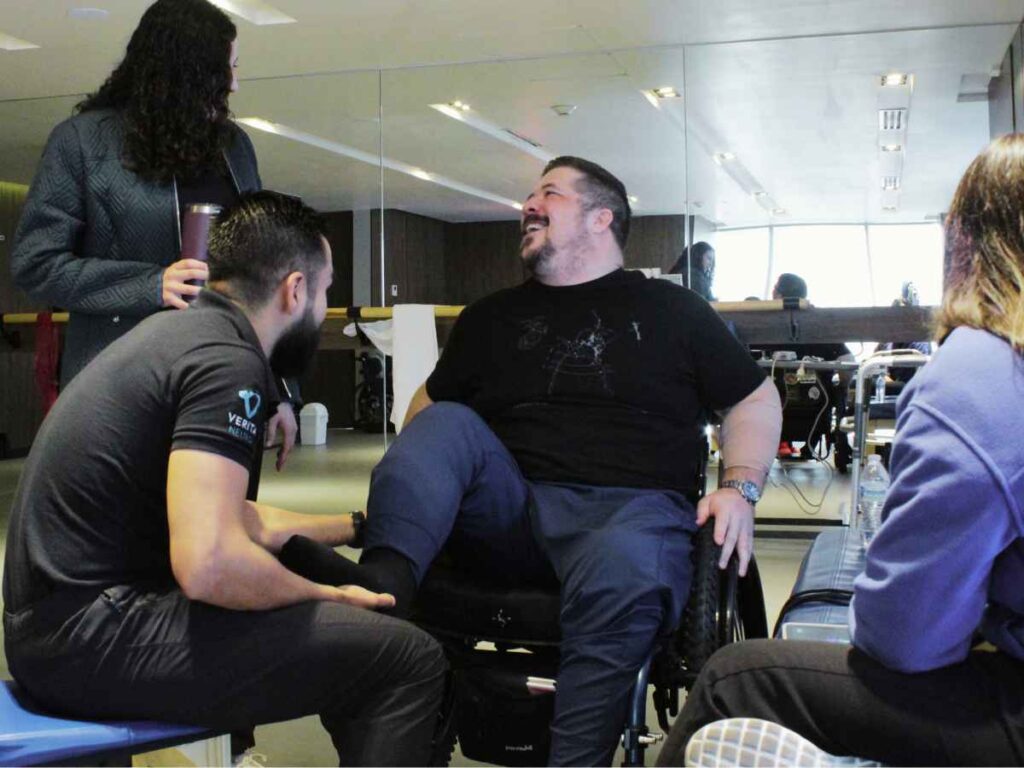
Do you have any advice for those considering epidural stimulation treatment?
My first advice I would give anybody is do your research, right? Because there are a high number of clinical trials that have already happened that you can read about, you can read through the results and what the expectations are and try to educate yourself. Because the first thing I would say is you need to set realistic long-term expectations for yourself and what you want to achieve. Make sure you have the commitment of time and resources that it’s going to take to do the treatment. As far as recommendations go, look, if you have the means to do the surgery and if you choose not to do it, I don’t think that you’re ever gonna forgive yourself for not at least trying. I think for a lot of people, that hope that you’re gonna get better is always there. I know a lot of the other people I’ve spoken to back home that are in wheelchairs – there’s a big community that I see in my local community and they’re rooting for me. They want to wait and see how it works out for me before they decide they’re going to come. So I mean everybody has to make a decision. But I really think that in the long term, it’s really going to pay off and any improvement in life, you know, quality of life, is always worth it.
Is there any other message you’d like to give?
I just want to continue to thank the rehab team here. Everybody’s been just really, really fantastic, guys and girls. In addition, every day they really taught me a lot of Spanish – not only the bad words!
The above is not a verbatim transcript of Paul’s interview. Some comments have been altered or re-arranged in order to improve the reading flow. You can see the full interview on our YouTube channel.

